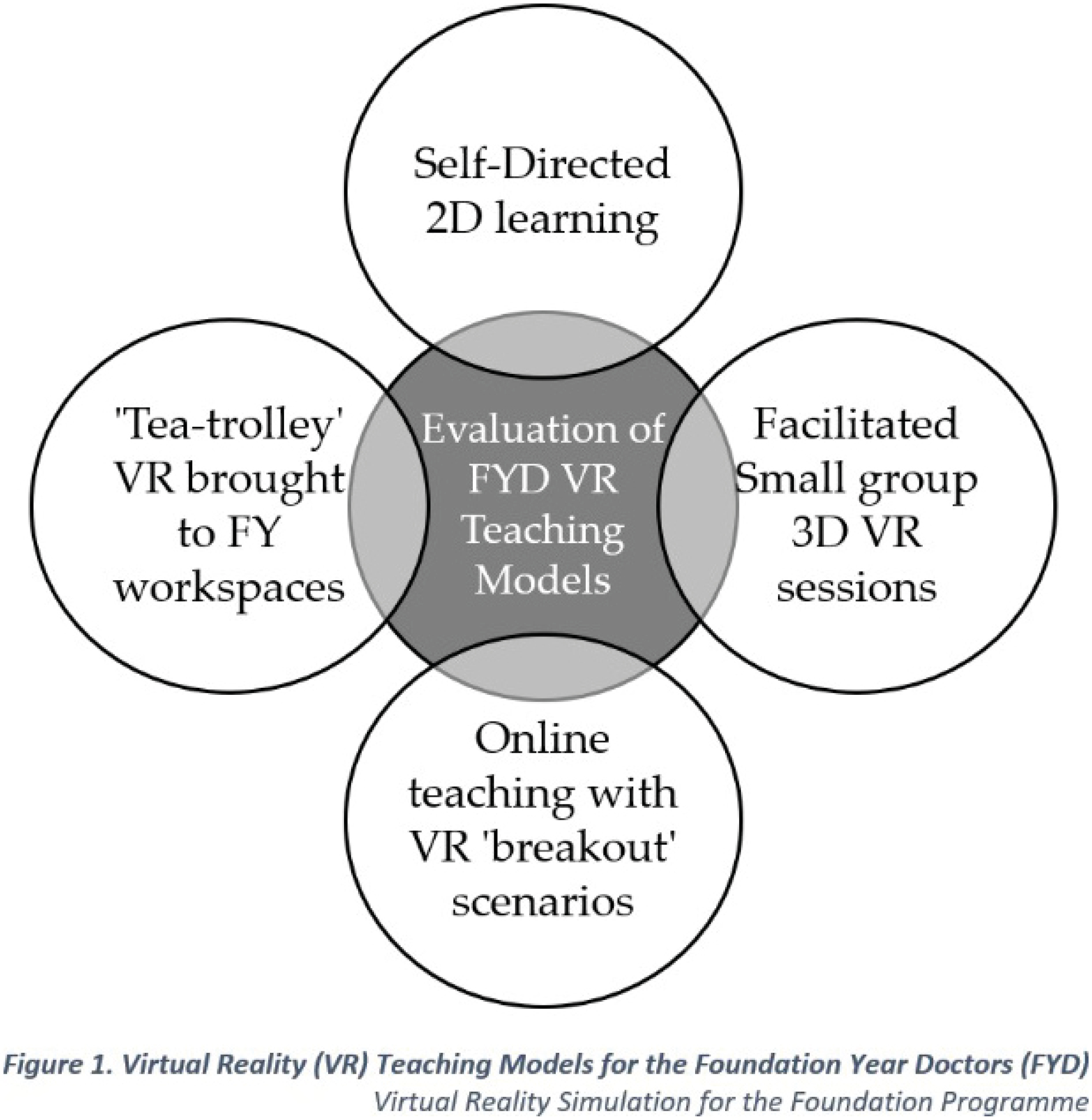
Recent events have resulted in widespread migration to technology-enhanced learning (TEL) including virtual reality (VR). Simulation remains essential [1] for foundation year doctor (FYD) training but access is dependent on significant resource and faculty requirements. VR allows FYDs to interact safely with virtual patients/healthcare professionals in 3D with a headset. This could complement existing simulation-based training. Over 200 FYDs work across the sites of Oxford University Hospitals NHS foundation Trust (OUHT). They already receive high-fidelity simulation and online teaching. We aimed to identify the best way to add VR to this teaching programme and assess its value in the context of anticipated challenges such as cohort/faculty sizes, space/equipment limitations, and available teaching time.
The Oxford Medical Simulation (OMS) VR platform was used [2] as we already have extensive experience with this system in undergraduate education. FYDs were consulted in the design of teaching models with varying faculty and equipment requirements (Figure 1). Sessions involving faculty were offered on a voluntary sign-up basis. Feedback was requested from FYDs and educators.


Initial reaction was encouraging. An FYD consulted at the design stage remarked: ‘…the scenarios were all really useful and enjoyable to work through. I think they are pitched at exactly the right level for FY1/FY2 … I also found it straightforward to access any of the investigations and resources that I needed in the scenarios and found the guided feedback really helpful too.’ Despite this, participation was surprisingly low, thereby limiting model evaluation. Early qualitative feedback suggested a preference for 3D over 2D this is supported by only 39/208 FYDs requesting home access. In response 3D sessions were increased but attendance remained low. Ongoing efforts are being made to maximise exposure and evaluate the programme as well as investigating the low participation level. Availability of dedicated teaching time and proximity to the end of the academic year could be important contributors.
The negative impact of the pandemic on trainees’ wellbeing and burnout risk has been nationally recognised alongside the reduced ability of trainers to protect training time [3]. Although the limited initial response was positive, technology and novelty alone cannot be relied upon to support training recovery. Learning from this project is being used directly to improve models for the next cohort and feedback to those involved in organising FYD education at the Trust.
1. United Kingdom Foundation Programme Office (UKFPO). UK Foundation Programme Curriculum 2021. 2021. https://foundationprogramme.nhs.uk/curriculum/ [Accessed on 29/06/2022]
2. Oxford Medical Simulation (OMS). Oxford Medical Simulation – VR training for optimal patient care. https://oxfordmedicalsimulation.com/ [Accessed on 29/06/2022]
3. General Medical Council. The state of medical education and practice in the UK. 2021. https://www.gmc-uk.org/about/what-we-do-and-why/data-and-research/the-state-of-medical-education-and-practice-in-the-uk [Accessed on 30/06/2022]